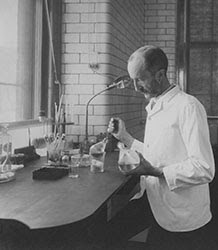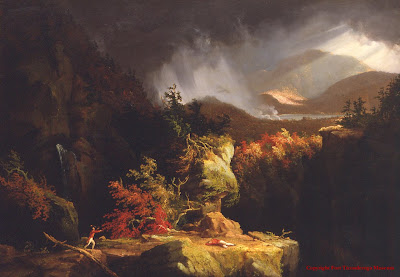 Historic Saranac Lake (HSL) was recently awarded National Endowment for the Humanities Preservation Assistance Grant. The grant will support the services of a professional consultant and the purchase of storage materials for the HSL collection.
Historic Saranac Lake (HSL) was recently awarded National Endowment for the Humanities Preservation Assistance Grant. The grant will support the services of a professional consultant and the purchase of storage materials for the HSL collection.
Eileen Corcoran, of Vergennes Vermont, will conduct a general preservation assessment and to help draft a long-range plan for the care of the HSL collection. She will also provide on site training to staff in methods and materials for the storage of collections, best practices for cataloging collections, and proper methods for the arrangement and description of archival collections.
Historic Saranac Lake houses a collection of letters and manuscripts, photographs and objects pertaining to the early scientific research of tuberculosis and care of TB patients in Saranac Lake, as well as a variety of items relating to the architecture and general history of the community. A number of these items are rare survivors of the many, many examples that once existed, such as an inspection certificate, or a record of patient treatments. They tell the story of a community of healing.
The Historic Saranac Lake collection is used for exhibitions, educational programs and by researchers. Historic Saranac Lake currently maintains two exhibitions at the Saranac Laboratory Museum. The main laboratory space is a model of a very early science lab. Visitors explore and gain an appreciation for the history of science by observing artifacts and letters on display such as early microscopes and laboratory equipment, early scientific journals and photographs of important men in the history of science.
An alcove in the laboratory has been arranged as an exhibit on patient care, another important facet of Saranac Lake’s TB history. Items from the collection are displayed such as a cure chair, photos of cure cottages, letters from patients, sputum cups, a pneumothorax machine for collapsing the lung, and items made by patients in occupational therapy. Visitors gain an understanding of the patient experience taking the fresh air cure in Saranac Lake.
The main floor meeting space contains another exhibition, “The Great War, WWI in Saranac Lake.” This exhibit includes letters from local soldiers, medals, photos, and a complete WWI uniform and supplies such as a gas mask and mess kit. The exhibit interprets this important time period in history and how it impacted Saranac Lake.
Historic Saranac Lake is a not-for-profit architectural preservation organization that captures and presents local history from their center at the Saranac Laboratory Museum. Founded in 1980, Historic Saranac Lake offers professional knowledge and experience to the public in support of Historic Preservation, architectural and historical research and education. HSL operates the Saranac Laboratory Museum and an online museum of local history at hsl.wikispot.org.
NEH is an independent grant-making agency of the United States government dedicated to supporting research, education, preservation, and public programs in the humanities. Preservation Assistance Grants help small and mid-sized institutions—such as libraries, museums, historical societies, archival repositories, cultural organizations, town and county records offices, and colleges and universities—improve their ability to preserve and care for their humanities collections.
 Those interested in learning more about how the museum field functions who work in a New York library, community organization, college or other type of non-profit, can apply for a Go! Grant to attend the 2011 Museums in Conversation conference, from April 3rd through 5th in Buffalo, NY.
Those interested in learning more about how the museum field functions who work in a New York library, community organization, college or other type of non-profit, can apply for a Go! Grant to attend the 2011 Museums in Conversation conference, from April 3rd through 5th in Buffalo, NY.






